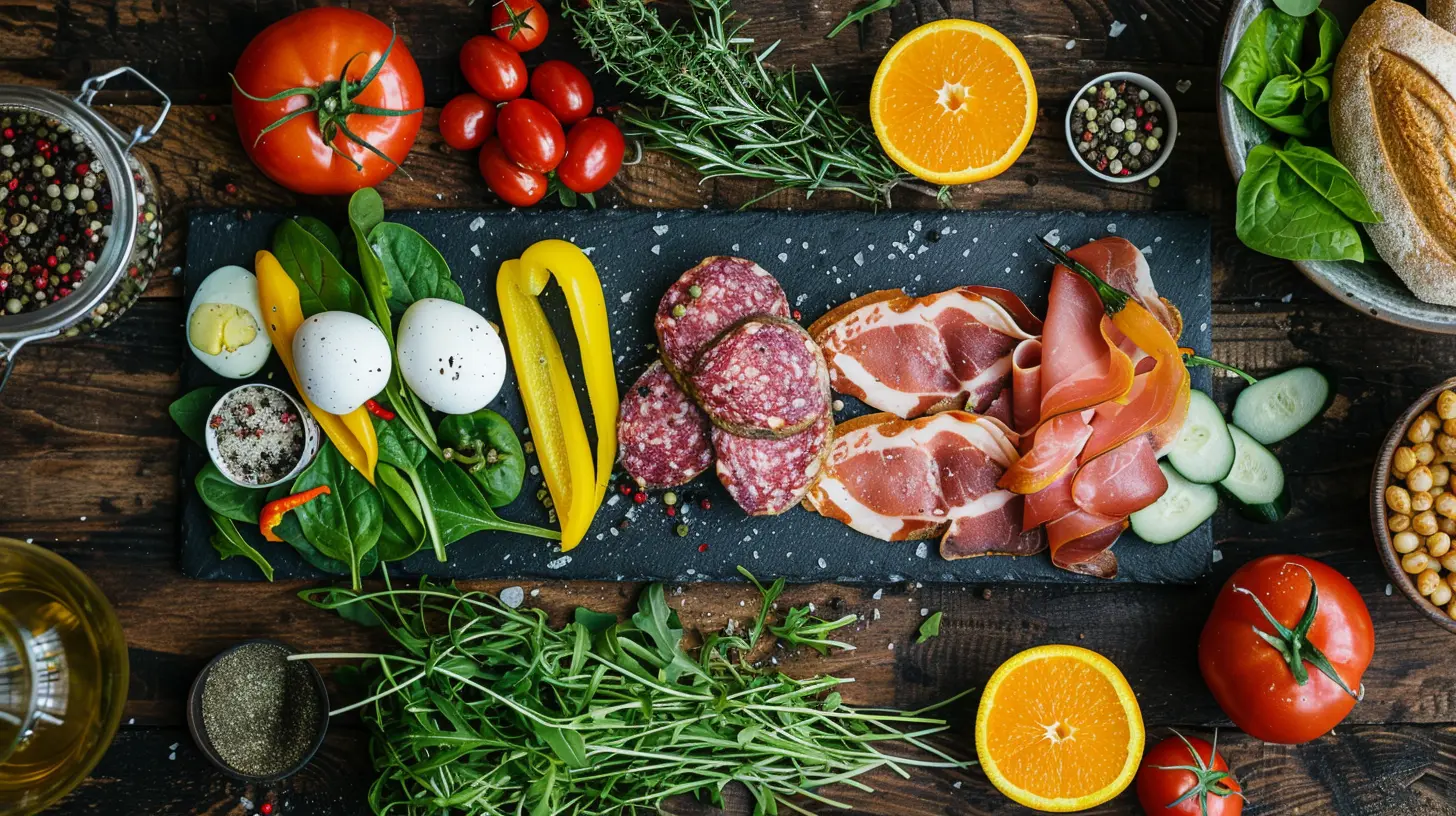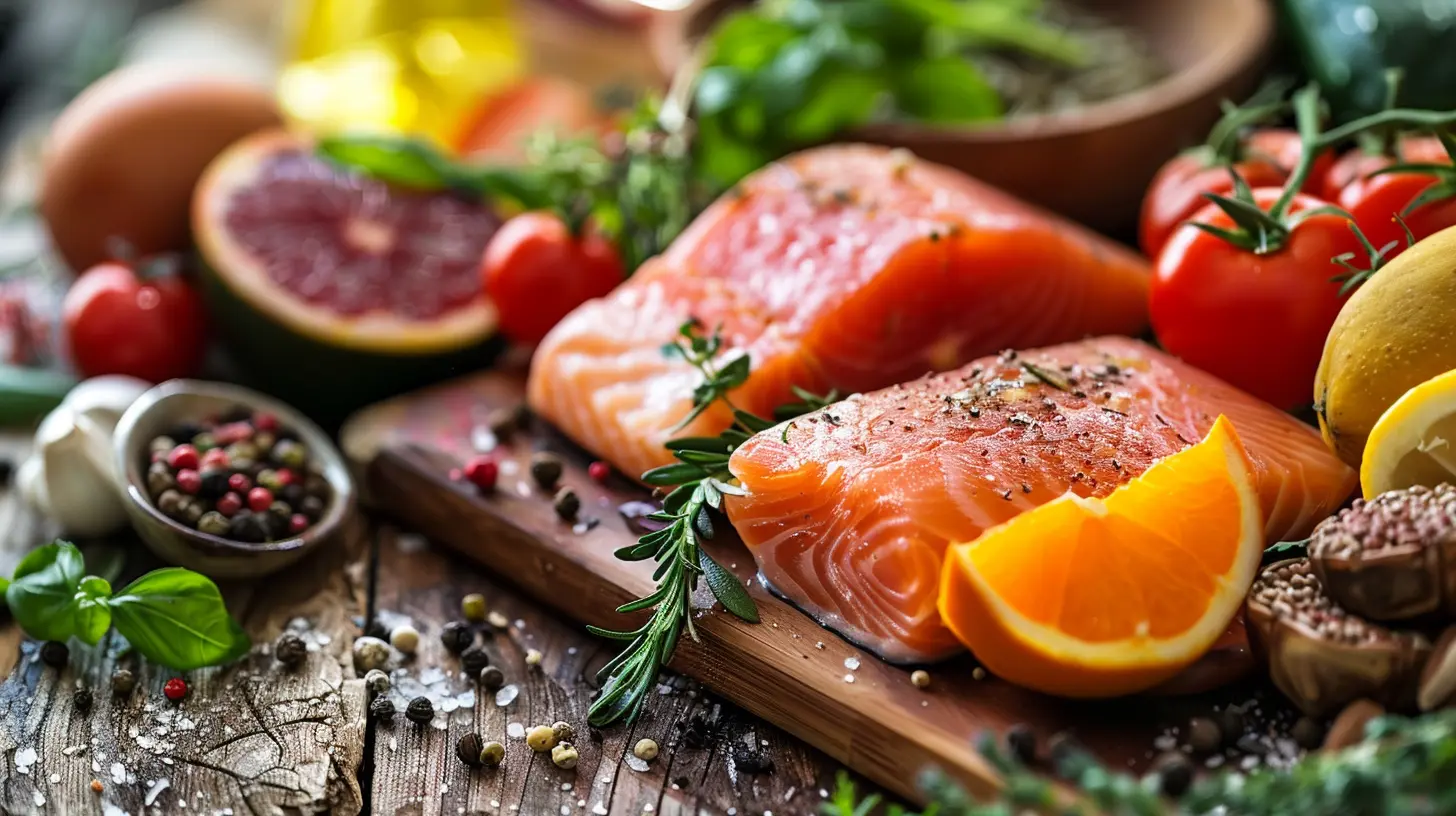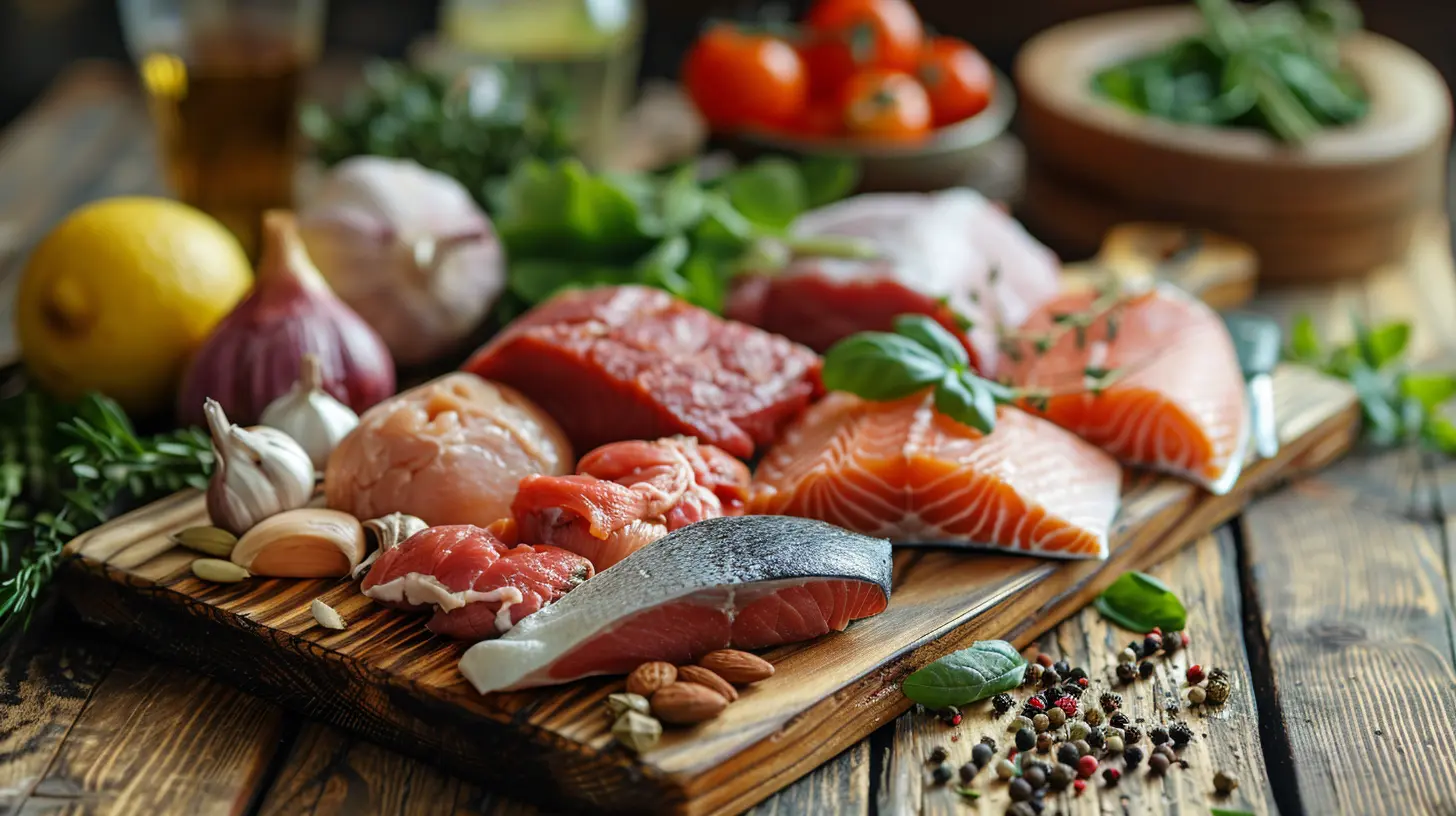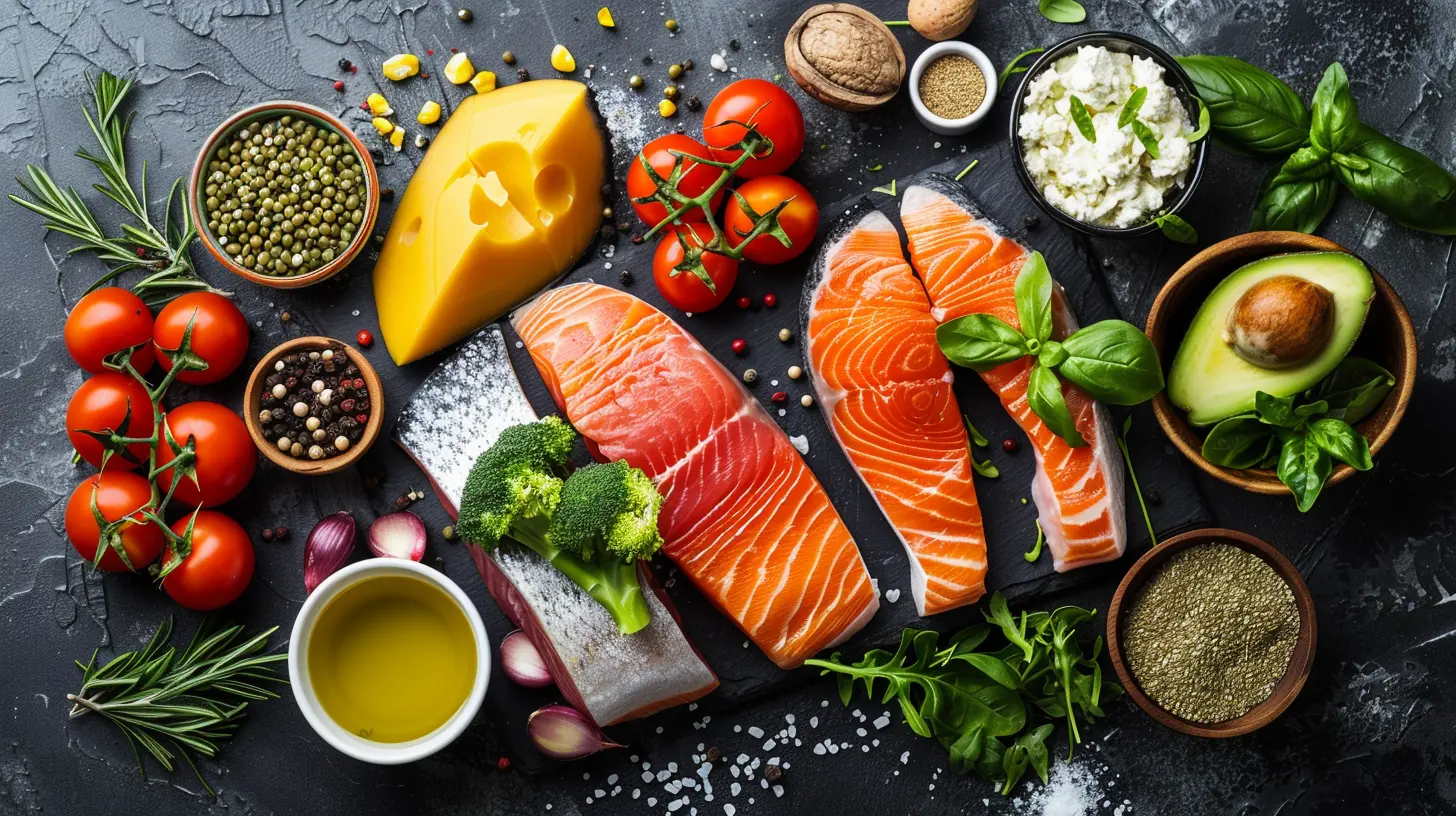How the Paleo Diet Improves Sleep and Recovery
11 July 2025
Let’s get one thing straight—sleep is not a luxury. It’s a non-negotiable, like your grandma’s secret cookie recipe or your morning cup of coffee. And while sleep is magical on its own, pairing it with better nutrition? Now you're cooking with fire! That’s where the Paleo diet swoops in like a caveman superhero.
Yep, we’re talking about the Paleo lifestyle—eating the way our ancestors did, minus the hunting with spears. You’ve probably heard all about how the Paleo diet helps with weight loss or gut health, but what if I told you it could also help you snooze better and recover faster?
Let’s unpack this (and have some fun while we’re at it!).
So, What Is the Paleo Diet Anyway?
First things first, let’s break down what this “Paleo” thing is. At its core, the Paleo diet is all about eating like our prehistoric ancestors. Think lean meats, fish, veggies, fruits, nuts, and seeds. What’s out? Basically anything processed—no refined sugar, dairy, grains, or legumes.The idea is simple: strip your diet back to the basics. No mystery ingredients. No junk. Just real, whole foods.
Imagine wandering around the forest with a spear in one hand and a basket in the other. If a caveman could eat it, it’s probably Paleo-approved.
How Does Sleep Tie Into All This?
Great question. Sleep is your body’s nightly repair session. While you’re dreaming about that green smoothie you forgot in the fridge, your muscles are rebuilding, your brain is rebooting, and your hormones are balancing themselves out.But here’s the kicker—if you’re not eating the right foods, your body doesn’t recover properly. And poor recovery = poor sleep. It’s a vicious cycle.
The Paleo diet, with its whole-food, low-inflammation approach, gives your body the fuel it needs to chill out, power down, and restore itself.
1. Paleo Helps Regulate Blood Sugar—So You Don’t Crash and Burn at Midnight
Ever had that 3 AM wake-up where your heart’s racing and you’re wide awake like it’s high noon? That could be your blood sugar dropping like a stone.Processed carbs and sugary snacks cause spikes and crashes in your blood sugar levels. When blood sugar crashes, your body releases stress hormones like cortisol and adrenaline to bring it back up. The result? Hello, midnight wake-up call.
Paleo meals—rich in lean protein and healthy fats—help balance your blood sugar so you sleep more soundly.
Example Paleo Dinner for Sweet Dreams:
Grilled salmon, roasted sweet potatoes, and steamed broccoli with olive oil. Balanced, satisfying, and cortisol-calming.
2. Say Bye-Bye to Inflammatory Foods (And Hello to Healing)
Inflammation is your body’s natural response to injury or stress. A little bit? Totally fine. Chronic inflammation from a poor diet? That’s when the trouble starts.Processed foods, refined sugars, and damaged fats (think vegetable oils) are like gasoline on the inflammation fire. And inflammation messes with your sleep big time.
But the Paleo diet cuts those culprits out and loads you up with anti-inflammatory foods like:
- Grass-fed meats
- Wild fish (hello, Omega-3s!)
- Leafy greens
- Berries
- Avocados
Eating this way helps your body chill out and focus on recovery instead of constantly battling inflammation.
3. Boosts Melatonin Naturally (Your Sleep Fairy)
Melatonin is the hormone that tells your body it's time to hit the hay. But here’s the deal—it doesn’t just magically appear. Your body needs the right nutrients to make it.Enter: the Paleo diet. It’s rich in nutrients that support natural melatonin production like:
- Magnesium (found in spinach, pumpkin seeds, and almonds)
- Vitamin B6 (in bananas and chicken)
- Tryptophan (in turkey and eggs)
Instead of popping a melatonin gummy every night, your body can actually start producing enough on its own when you eat the right stuff.
4. Balances Hormones That Control Sleep
You didn’t think sleep was just about being tired, did you? Nope, it’s a hormonal circus in there.Cortisol (stress hormone) needs to be low at night so melatonin can rise. Insulin plays a role too. Then there’s leptin and ghrelin (your hunger hormones) which mess with sleep if they’re out of whack.
Processed foods and sugar send these hormones into a tailspin. The whole-food focus of the Paleo diet helps reset your hormones so they’re working with you—not against you.
Quick Wins:
- Cut sugar = lower cortisol
- Eat protein = steady insulin
- Healthy fats = balanced leptin and ghrelin
Boom. Better sleep incoming.
5. Supports Muscle Repair and Recovery
If you hit the gym (or even just chase toddlers around all day), your muscles need TLC. During deep sleep, your body gets to work repairing tiny muscle tears and clearing out metabolic waste.The Paleo diet is packed with high-quality protein, healthy fats, and micronutrients that help your muscles bounce back faster.
Key Recovery Nutrients in Paleo:
- Protein (chicken, eggs, bison, fish)
- Omega-3 fatty acids (salmon, walnuts)
- Zinc and Iron (red meat, shellfish)
When your body has the building blocks it needs, recovery gets quicker—and you wake up feeling like a rockstar rather than roadkill.
6. No More Gut Issues Keeping You Awake
Let’s get real for a second—bloating, gas, and discomfort are major sleep disruptors. If your gut is unhappy, good luck falling (or staying) asleep.The Paleo diet eliminates common gut irritants like:
- Gluten
- Dairy
- Legumes
Instead, it brings in fiber-rich veggies, fermented foods (if you’re into those), and healing bone broth. A happy gut means less tossing and turning and more Zzz’s.
7. Promotes a Calming Evening Ritual
Here’s a sneaky side benefit of Paleo—most meals take a bit of effort. You’re cooking more, thinking about your food, and slowing things down.And guess what? That mindfulness can carry over into the evening. Cooking a nourishing dinner, sipping herbal tea, and winding down? Way better than scrolling TikTok with a bag of chips.
The Paleo lifestyle isn’t just about what’s on your plate. It invites you to unplug, relax, and create a calm environment that’s perfect for solid sleep.
Tips To Maximize Paleo’s Sleep and Recovery Benefits
Alright, so you’re sold on the Paleo train. But how do you make sure you’re getting the most out of it when it comes to your shut-eye?Here are a few tips to improve your results:
1. Don’t Skip Carbs Entirely
Yes, Paleo avoids processed carbs—but it doesn’t mean “no carbs ever.” In fact, carbs like sweet potatoes, plantains, and squash can help you sleep by boosting serotonin.Try adding a bit of healthy starch to your dinner to help your body relax.
2. Stay Hydrated (But Not Right Before Bed)
Water helps nutrients do their job. But chugging a gallon before hitting the sack? Not ideal. Stay hydrated throughout the day, and taper off before bedtime.3. Watch the Caffeine
Coffee’s Paleo-friendly... but that doesn’t mean you should be sipping espresso at 5 PM. Cut caffeine after noon to keep your sleep hormones in balance.4. Prioritize Sleep the Caveman Way
Back in the day, there were no Netflix marathons or blue light screens. Cavemen rose with the sun and dozed off with the stars.Try winding down with candlelight, dimming your lights, and shutting off screens an hour before bed to mimic that natural rhythm.
What About Cheat Days?
Hey, we’re all human. Life happens. A birthday cake here, some fries there—it’s all good. Just remember, the more consistently you nourish your body with Paleo-inspired foods, the more likely you’ll notice improvements in your sleep and recovery.Think of Paleo as your baseline, not a prison sentence. The goal isn’t perfection—it’s feeling amazing.
Final Thoughts: Sleep Like a Caveman (In a Really Cozy Bed)
At the end of the day, the Paleo diet isn’t just a fad—it’s a return to simple, nourishing foods that your body actually understands. And when your body feels safe, fed, and balanced? It rewards you with deeper sleep and faster recovery.So if you’ve been struggling to fall asleep, waking up groggy, or just feeling like your body needs a major recharge, maybe it’s time to channel your inner caveman.
Toss the Pop-Tarts, fire up the skillet, and let the Paleo lifestyle tuck you in—with a full stomach and a happy heart.
Sleep tight!
all images in this post were generated using AI tools
Category:
Paleo DietAuthor:

Holly Ellison
Discussion
rate this article
1 comments
Kieran Barker
Thank you for this insightful article! It's amazing how the Paleo diet can enhance sleep and recovery. The connection between nutrition and rest is so often overlooked. I’m excited to explore these benefits and improve my overall well-being. Keep up the great work!
July 28, 2025 at 4:39 AM

Holly Ellison
Thank you for your kind words! I'm glad you found the article insightful. Wishing you all the best on your Paleo journey to better sleep and recovery!


